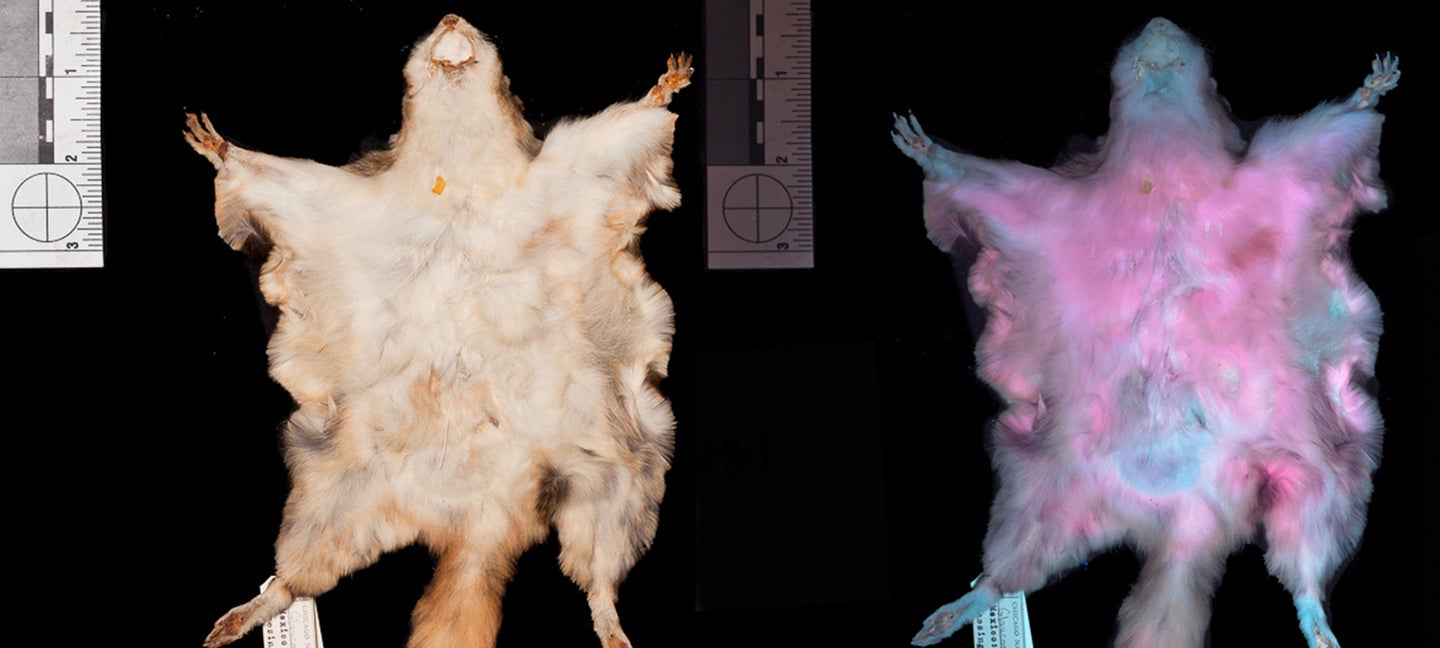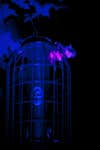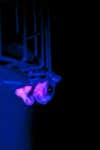These flying squirrels fluoresce hot pink, and no one knows exactly why
Shining a UV light on the gliding mammals reveals something beautiful.

Flying squirrels are adorable little mammals that weigh less than half a pound. It also turns out that the three flying squirrel species that dwell in North America—called New World flying squirrels—glow fluorescent pink under ultraviolet light. And the researchers who discovered the phenomenon still don’t know exactly why.
The investigation into these fluorescent flying critters began with a serendipitous discovery: Jonathan Martin, an associate professor of forestry at Northland College in Wisconsin, was coming back from a hike at night, and shone a UV light at the flying squirrels he heard on his bird feeder. “Then I saw this blaze of pink,” he recalls, via email. “It was simply beautiful.” (He was already interested in the topic of fluorescence in nature, and had read a study about fluorescent frogs.)
That eventually triggered more formal research by Allie Kohler, who was an undergraduate at Northland at the time and is now a masters student at Texas A&M University, studying wildlife. She began by looking at specimens at the Science Museum of Minnesota.
“I was able to go there quickly, and look through their museum specimens, and every single one that I saw that was a flying squirrel did fluoresce hot pink,” she recalls. The researchers also checked out critters at the Field Museum in Chicago, which did the same thing. These flying squirrels (actually they’re gliders, not flyers) come in three different species, all in the genus of Glaucomys, and are active at night and a dawn or dusk, making them “nocturnal-crepuscular,” according to a paper in the Journal of Mammalogy reporting their results.
They also checked out regular squirrels that are active during the day, like the Sciurus carolinensis, or Eastern gray squirrel. Those rodents do not glow under UV light.
On these flying squirrels, the fluorescent effect is stronger on the critters’ underside. The researchers speculate a few reasons why it might be present on their bodies. Among their hypotheses: it could help them communicate in some way, avoid predators, or might come in handy in snow-covered terrain.
Fluorescence, by the way, is when a substance emits longer wavelength light after getting hit by shorter wavelength light—in this case, ultraviolet light is hitting the squirrels and being sent back out as the pink hue that humans can see. Other life forms fluoresce too, like some parrots.
To capture the images photographically, the researchers trained an ultraviolet flashlight at them, and shot using a Canon EOS 50D camera. They also had to add a yellow filter to the camera to soak up background blue wavelengths of light that were coming out of the UV flashlight, to make the fluorescent color more visible.
Kohler says that research has shown that flying squirrels’ eye lenses are capable of allowing ultraviolet light to pass through, but it’s unclear what, if anything, the squirrels see. “The real question is,” she says, “is their brain processing this information?”
More photos, below.

RELATED: Spooky animal x-rays are exactly as cool as you’d imagine


